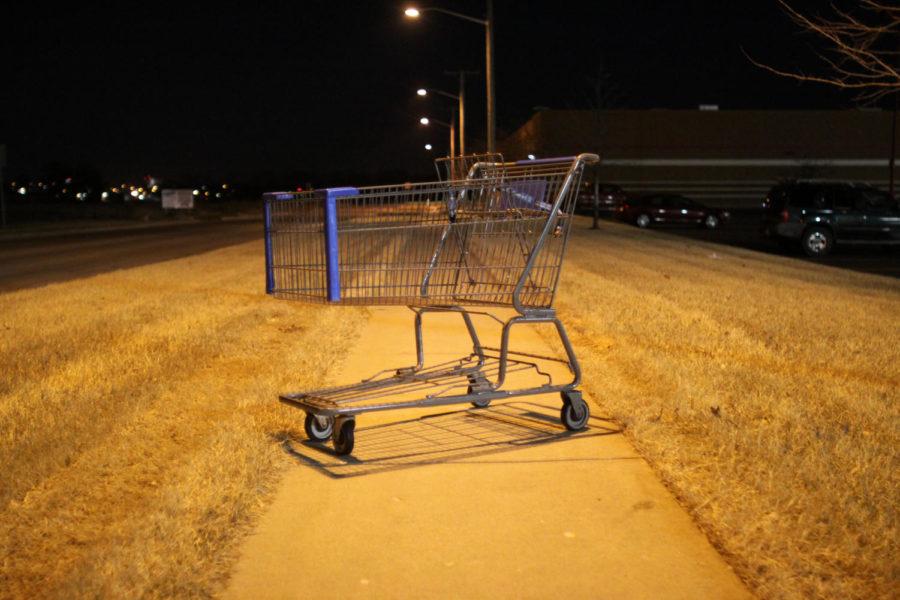Editorial: Controlling abandoned carts is a store responsibility
Students without personal transportation who shop on Duff Avenue utilize CyRide transportation and haul their groceries to the CyRide bus stops, leaving behind their shopping carts. Ames City Council is recently exploring the options for these carts after a compaint from an Ames resident.
January 28, 2015
The Ames City Council has received complaints from a visually impaired citizen about the Walmart and Target shopping carts that are left at the corner of South 5th Street and Duff Avenue.
The complaint stated that the clutter of carts made it difficult to navigate the sidewalk and was therefore unsafe. Taking carts to areas like this particular bus stop, though the problem occurs all over the city, is not permitted under store policy at any retail or grocery store locations.
The concerned citizen certainly has a point. The carts, which are discarded by shoppers as they board the bus, but are left at the bus stop until the retailers come to collect them, pose dangers to pedestrians as well as drivers. There is currently no system in place to collect the carts in any organized fashion other than shoving them together and moving them as far off of the sidewalk as possible. While this may make the sidewalk sufficiently safe for a majority of Ames citizens, the needs and safety of all citizens must be taken into account.
The shoppers who leave their carts on the sidewalk are only partially to blame. First, there is little else they can do in the way of transporting their groceries to the bus other than taking their carts with them because the only reason they would bring the cart is if the load was too heavy to carry. Secondly, once the bus arrives, they can’t simply place their items on the bus and then hop back off and run their carts back to the store because the bus obviously arrives and leaves on a schedule.
The most reasonable solution would be to build a cart-receiving stall next to the bus stop similar to the ones in the parking lots of the stores themselves and then have an employee retrieve them. This would provide bus-bound shoppers with a safer place to leave their carts, thus clearing the sidewalk for pedestrians and lowering the risk of having the carts roll over the curb and possibly into traffic.
The cost and responsibility of building the stalls would obviously fall to the individual retailers, as the only other conceivable solution would be to alter the bus route to pick the passengers up closer to actual store locations, but this option’s estimated cost is set at $250,000, making it almost prohibitively expensive.
Some grocery stores, like Hy-Vee and Walmart, have employees in place to bring back abandoned carts if they are noticed away from the store’s premises. In a City of Ames document, Hy-Vee “stated that the cost of sending staff to retrieve the carts is minimal compared to the cost of the carts” and Walmart has trained employees to stop people from taking carts off of store property, but even that policy does not consistently stop the carts from ending up in public areas.
That is because no matter what store policy may be, people have their own convenience in mind and are not likely to change their ways in this circumstance. The only solutions are to step up enforcement when it comes to keeping carts on store property — truly the less reasonable of the two options — or embrace the reality of the situation and simply build cart holding stalls at bus stops.

















